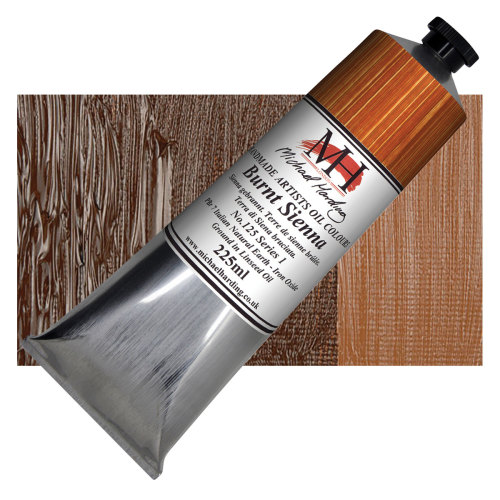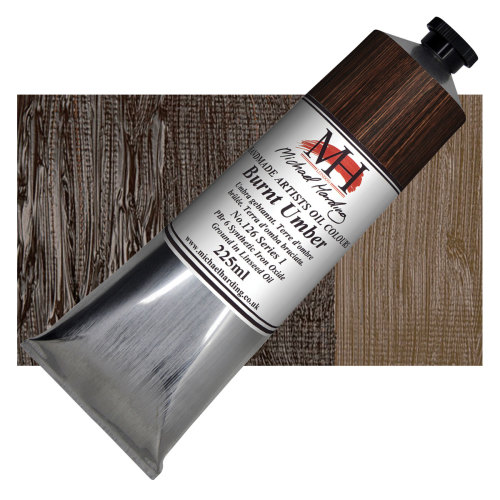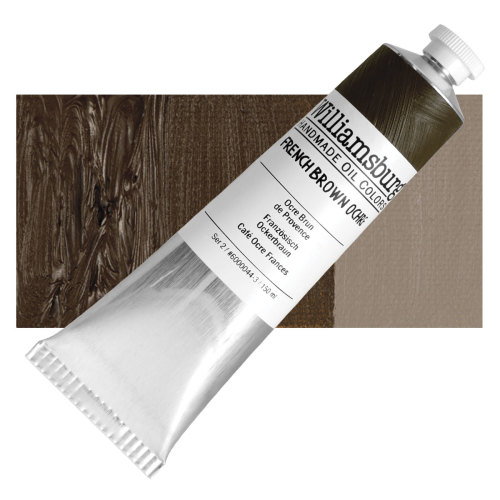In this guide, we’ll answer the question ‘what colours make brown?’. With details on how to make brown from the primaries colours, which naturally occurring brown pigments you can buy in paint form and some colour mixing recipes!
Disclaimer: Fine Art Tutorials is a reader supported site. When you make purchases through links on this site, we may earn a small commission at no extra cost to you.
What colours make brown?

Brown is a warm, neutral, desaturated colour that consists of all the primaries, including red, yellow and blue. It is created by mixing these three primary colours together in different proportions.
Mix the primary colours to make brown
The primary colours are forms of red, yellow and blue. Primary colours in colour theory describe colours that cannot be made from any other colour on the wheel. These colours are the foundation for creating all other colours in the spectrum in art and design. This includes secondary colours, tertiary colours and all other variations of these colours, including their tones.
Warm and cool colours

There are also warm and cool versions of colours. Warm colours include red, orange and yellow, which are often associated with feelings of warmth or heat. Cool colours include shades of blue, purple and green.
Brown is a warm neutral colour, so it should point more towards yellow or red on the colour wheel. Grey on the other hand is a cool neutral colour. This means that it will point more towards blue than red or yellow on the colour wheel.
How to mix brown: Process
To understand how the primary colours interact, it helps to look at the colour wheel.

For example, if you mix red and yellow, it creates the secondary colour orange. Orange sits opposite blue on the colour wheel, this makes orange and blue complementary colours. When we mix these colours in equal proportions, it will make black (or a very deep greyish colour). Blue is a cool colour and orange is a warm colour. However, if we want to make brown, we need a higher proportion of that warm colour. So if we mix a higher proportion of orange with blue, the colours will neutralise each other. However, the result will be a colour that points more towards orange that blue, resulting in a brown tone. This is fundamentally how you mix brown. These same steps can be used with any of the primary colours. Just make sure to use a higher proportion of the warm colour compared to the cool.
In practice you can take shortcuts and mix secondary or tertiary tubes of paint. Mix brown or black pigments to make your preferred shades of brown. Cadmium red and ivory black for example makes a deep, reddish chocolate brown. You don’t have to stick to just using colours that correspond to primaries, use whatever tubes of paint you have. However, using primaries to make brown will result in you being able to achieve the widest range of brown tones from your mixes.
If you want to learn how to mix colours or how to mix colours for realism painting, check out our tutorials.
What are the primaries in pigment form?

In pigment form, there are specific pigments that correspond closely to true primaries. These are usually called cyan (phthalocyanine), magenta and yellow. The pigment numbers are PB15 (cyan), PV19 (magenta) and PY128 (yellow).
From these primary pigments, you can mix the largest variety of tones from the fewest tubes. However, because the pigments correspond to the primaries imperfectly, there will be some gaps in the range of tones and colours you can mix. For example, magenta is considered a cool red, so there will be gaps in the range of purples and oranges you can mix from it.
This is why most artists will recommend broadening your palette with more variations of the primaries, such as cadmium red, cadmium yellow or ultramarine. You should also get a dark colour to mix shadow tones and deep browns, like ivory black or burnt umber. If you’re interested in learning more about colour palettes in art, check out our guide.
How to mix specific tones of brown
To mix specific shades of brown, you will need to practice the skill of colour mixing and understand the properties of the pigments you are using.
You can use any number of pigments on your palette to create brown. For example, if you have earth tones like burnt sienna or burnt umber, you can alter these colours with the addition of any other primaries, white or black.
To mix deep red browns, add more red, to mix green or yellow browns, add more yellow, or slightly more blue. For light browns, add some titanium white. Try to visualise where the colour sits on the wheel and which hue the tone you are aiming for points towards. From there, you can decide how many parts of each colour to mix. Mixing is a process of trial and error, spend some time practising to become faster and more accurate.
Brown pigments

Earth colours are pigments that represent shades of brown. There are a number of naturally occurring and synthetic pigments that have different tones of brown, straight out of the paint tube. Here are some of the most popular brown pigments and their properties:
Sienna

Raw sienna is an earth iron oxide that also contains manganese oxide. It is yellow brown in tone and has been used since the Renaissance period in underpaintings. This is a semi transparent colour.
The burnt sienna pigment is the same as raw sienna, but heating it to create burnt sienna creates a reddish brown tone.
Umber

Umber is a naturally sourced pigment that originally came from Umbria in Italy, but it can be sourced from around the world. It is extracted from clay soil that is rich in iron and manganese oxides. Umber was one of the first pigments used by humans. It can range in hue, from having red to yellow or green undertones depending on how it has been treated. Due to the higher proportion of manganese oxide, it is darker in colour than sienna or ochre.
Raw umber is a deep, yellowish brown that became popular during the Renaissance period, where artists started painting with contrasted colours, using the chiaroscuro technique.

The semi transparent pigment was applied to the shadows in Vermeer’s ‘Milkmaid’ to provide warm contrast in the shadow tones.
Burnt umber is a medium reddish brown earth pigment, that is semi transparent and made from heating raw umber. This colour can be mixed with ultramarine blue to make deep back tones.
Ochre

Ochre is another pigment that is found in soil, it comes from clay soil that contains ferric oxide and iron oxide or iron hydroxide. It’s tones are lighter than other earth pigments that lean more towards yellow on the colour spectrum. Yellow ochre is one of the most popular and widely used pigments. It can be used to mix natural, earthy looking greens in landscape paintings.
If you want to create pure, brown tones that appear earthy and natural straight out of the tube, choose one of these pigments! The great thing about them is that they dry quickly and are often semi transparent or transparent, which makes them the perfect option for underpaintings.
Colour mixing terminology
Understanding colour mixing jargon can help you on your way to master your colour mixing skills. Here are some terms you need to know:
- Tone: A tone is when you neutralise a colour. Do this by mixing the hue with grey, or with its complementary colour.
- Value: A value describes the lightness or darkness of a colour.
- Warm colours: Warm colours are shades of red, yellow or orange.
- Cool colours: Cool colours are shades of blue, green and purple.
- Shade: A shade is when you mix a hue with black, or darken the colour.
- Saturation: Saturation describes the purity of a colour, whether it has been diluted by white or grey.
- Tint: A tint is when you mix a hue with white.
- Hue: A hue is the actual colour that a pigment or ink has, whether it be red, blue, yellow or any other variation of those colours.
Once you understand how to describe your colour mixes using these terms and how colours interact with each other in different proportions, you can start experimenting with mixing brown from scratch.
Finally
As you can see, there are many different ways to create brown in both pigment form and by mixing different colours together. Whether you are looking for a rich dark shade or a light neutral tone, there are multiple approaches to mixing brown. Practise and experiment and you will be making accurate brown tones in no time!

